The Pullout Mechanical Properties of Shrub Root Systems in a Typical Karst Area, Southwest China
Abstract
:1. Introduction
2. Materials and Methods
2.1. Materials
2.2. Tree Species Selection and the Characteristics of Experimental Plants
2.3. Device and Experimental Procedure
3. Results
3.1. Characteristics of the Relationship Curves between the Root Pullout Force and Displacement Value (F–s curves)
3.2. Influence of Soil Thickness on Maximum Pulling Force
3.3. Resistance Response of Broken Roots to the Maximum Pulling Force
3.4. Different Characteristics of Root Drawing between the Two Tree Species
4. Discussion
4.1. Characteristics of F–s curves
4.2. Influence Mechanism of Root Failure Modes on Root Mechanical Properties during Pullout
4.3. Applicability of the Pullout Test
5. Conclusions
Author Contributions
Funding
Institutional Review Board Statement
Informed Consent Statement
Data Availability Statement
Acknowledgments
Conflicts of Interest
References
- Peng, X.; Dai, Q.; Ding, G.; Shi, D.; Li, C. Impact of vegetation restoration on soil properties in near-surface fissures located in karst rocky desertification regions. Soil Tillage Res. 2020, 200, 104620. [Google Scholar] [CrossRef]
- Dai, Q.; Peng, X.; Yang, Z.; Zhao, L. Runoff and erosion processes on bare slopes in the Karst Rocky Desertification Area. Catena 2017, 152, 218–226. [Google Scholar] [CrossRef]
- Wang, F.; Wu, Y.; Yang, H. Preliminary investigation of the 20 August 2014 debris flows triggered by a severe rainstorm in Hiroshima City, Japan. Geoenviron. Disasters 2015, 2, 17. [Google Scholar] [CrossRef] [Green Version]
- McSaveney, M.J.; Massey, C.I. Inadvertent Engineered Activation of Utiku Landslide, New Zealand. In Advancing Culture of Living with Landslides; Springer International Publishing: Berlin/Heidelberg, Germany, 2017; pp. 563–568. [Google Scholar]
- Crosta, G.B.; Frattini, P. Rainfall-induced landslides and debris flows. Hydrol. Process 2008, 22, 473–477. [Google Scholar] [CrossRef]
- Wu, T.H.; McOmber, R.M.; Erb, R.T.; Beal, P.E. Study of Soil-Root Interaction. J. Geotech. Eng. 1988, 114, 1351–1375. [Google Scholar] [CrossRef]
- Montgomery, D.R.; Schmidt, K.M.; Greenberg, H.M. Forest clearing and regional landsliding. Geology 2000, 28, 311–314. [Google Scholar] [CrossRef]
- Masi, E.; Segoni, S.; Tofani, V. Root Reinforcement in Slope Stability Models: A Review. Geosciences 2021, 11, 212. [Google Scholar] [CrossRef]
- Liang, T.; Bengough, G.; Knappett, J.; MuirWood, D.; Loades, K.; Hallett, P.; Boldrin, D.; Leung, A.; Meijer, G. Scaling of the reinforcement of soil slopes by living plants in a geotechnical centrifuge. Ecol. Eng. 2017, 109, 207–227. [Google Scholar] [CrossRef] [Green Version]
- Amundson, R.; Heimsath, A.; Owen, J.; Yoo, K.; Dietrich, W.E. Hillslope soils and vegetation. Geomorphology 2015, 234, 122–132. [Google Scholar] [CrossRef]
- Park, J.; Kim, I.; Kang, J.-K. Root Reinforcement Effect on Cover Slopes of Solid Waste Landfill in Soil Bioengineering. Sustainability 2021, 13, 3991. [Google Scholar] [CrossRef]
- O’Loughlin, C. The protective role of trees in soil conservation. N. Z. J. For. Sci. 2005, 49, 9–15. [Google Scholar]
- Steinacher, R.; Medicus, G.; Felling, W. The influence of deforestation on slope (in-) stability. Austrian J. Earth Sci. 2009, 102, 90–99. [Google Scholar]
- Buma, B.; Johnson, A.C. The role of windstorm exposure and yellow cedar decline on landslide susceptibility in southeast Alaskan temperate rainforests. Geomorphology 2015, 228, 504–511. [Google Scholar] [CrossRef]
- Stokes, A.; Douglas, G.B.; Fourcaud, T. Ecological mitigation of hillslope instability: Ten key issues facing researchers and practitioners. Plant Soil 2014, 377, 1–23. [Google Scholar] [CrossRef] [Green Version]
- Vergani, C.; Schwarz, M.; Soldati, M.; Corda, A.; Giadrossich, F.; Chiaradia, E.A.; Morando, P.; Bassanelli, C. Root reinforcement dynamics in subalpine spruce forests following timber harvest: A case study in Canton Schwyz, Switzerland. Catena 2016, 143, 275–288. [Google Scholar] [CrossRef] [Green Version]
- Su, X.; Zhou, Z.; Liu, J.; Cao, L.; Liu, J.; Wang, P. Estimating slope stability by the root reinforcement mechanism of Artemisia sacrorum on the Loess Plateau of China. Ecol. Model. 2021, 444, 109473. [Google Scholar] [CrossRef]
- Vergani, C.; Giadrossich, F.; Buckley, P. Root reinforcement dynamics of European coppice woodlands and their effect on shallow landslides: A review. Earth-Sci. Rev. 2017, 167, 88–102. [Google Scholar] [CrossRef]
- Giadrossich, F.; Cohen, D.; Schwarz, M.; Ganga, A.; Marrosu, R.; Pirastru, M.; Capra, G.F. Large roots dominate the contribution of trees to slope stability. Earth Surf. Process. Landf. 2019, 44, 1602–1609. [Google Scholar] [CrossRef]
- Schwarz, M.; Rist, A.; Cohen, D.; Giadrossich, F.; Egorov, P.; Büttner, D.; Stolz, M.; Thormann, J. Root reinforcement of soils under compression. J. Geophys. Res. Earth Surf. 2015, 120, 2103–2120. [Google Scholar] [CrossRef] [Green Version]
- Schwarz, M.; Preti, F.; Giadrossich, F.; Lehmann, P.; Or, D. Quantifying the role of vegetation in slope stability: A case study in Tuscany (Italy). Ecol. Eng. 2010, 36, 285–291. [Google Scholar] [CrossRef]
- Reubens, B.; Poesen, J.; Danjon, F.; Geudens, G.; Muys, B. The role of fine and coarse roots in shallow slope stability and soil erosion control with a focus on root system architecture: A review. Trees 2007, 21, 385–402. [Google Scholar] [CrossRef]
- Stokes, A.; Ball, J.; Fitter, A.H.; Brain, P.; Coutts, M.P. An Experimental Investigation of the Resistance of Model Root Systems to Uprooting. Ann. Bot. 1996, 78, 415–421. [Google Scholar] [CrossRef]
- Dupuy, L.; Fourcaud, T.; Stokes, A. A numerical investigation into factors affecting the anchorage of roots in tension. Eur. J. Soil Sci. 2005, 56, 319–327. [Google Scholar] [CrossRef]
- Waldron, L.J. The Shear Resistance of Root-Permeated Homogeneous and Stratified Soil. Soil Sci. Soc. Am. J. 1977, 41, 843–849. [Google Scholar] [CrossRef]
- Hasenmueller, E.A.; Gu, X.; Weitzman, J.N. Weathering of rock to regolith: The activity of deep roots in bedrock fractures. In Proceedings of the GSA Annual Meeting, Seattle, WA, USA, 22–25 October 2017. [Google Scholar]
- Pawlik, Ł.; Phillips, J.D.; Šamonil, P. Roots, rock, and regolith: Biomechanical and biochemical weathering by trees and its impacton hillslopes—A critical literature review. Earth Sci. Rev. 2016, 159, 142–159. [Google Scholar] [CrossRef] [Green Version]
- Tien Bui, D.; Ho, T.C.; Pradhan, B.; Pham, B.T.; Nhu, V.H.; Revhaug, I. GIS-based modeling of rainfall-induced landslides using data mining-based functional trees classifier with AdaBoost, Bagging, and MultiBoost ensemble frameworks. Environ. Earth Sci. 2016, 75, 1101. [Google Scholar] [CrossRef]
- Zêzere, J.-L. Effects of Landslide Inventories Uncertainty on Landslide Susceptibility Modelling. In: Landslide Processes: From Geomorphologic Mapping to Dynamic Modelling. 2009, pp. 81–86. Available online: https://www.researchgate.net/publication/254234522_Effects_of_landslide_inventories_uncertainty_on_landslide_susceptibility_modelling (accessed on 18 January 2022).
- Azarafza, M.; Azarafza, M.; Akgün, H.; Atkinson, P.M.; Derakhshani, R. Deep learning-based landslide susceptibility mapping. Sci. Rep. 2021, 11, 24112. [Google Scholar] [CrossRef]
- Mu, H.; Yu, X.; Fu, S.; Yu, B.; Liu, Y.; Zhang, G. Effect of stem basalcover on the sediment transport capacity of overland flows. Geoderma 2019, 337, 384–393. [Google Scholar] [CrossRef]
- Yang, Q.; Zhang, C.; Liu, P. The Role of Root Morphology and Pulling Direction in Pullout Resistance of Alfalfa Roots. Front. Plant Sci. 2021, 12, 212. [Google Scholar] [CrossRef]
- Cohen, D.; Schwarz, M. Tree-roots control of shallow landslides. Earth Surf. Dyn. 2017, 5, 451–477. [Google Scholar] [CrossRef] [Green Version]
- Wu, T.H.; McKinnell, W.P.; Swanston, D.N. Strength of tree roots and landslide on Prince of Wales Island, Alaska. Can. Geotech 1979, 16, 19–33. [Google Scholar] [CrossRef]
- Wu, T.H. Investigation on Landslides on Prince of Wales Island; Alaska Geotech Report No. 5; Department Civil Engineering Ohio State University: Columbus, OH, USA, 1976. [Google Scholar]
- Giadrossich, F.; Schwarz, M.; Cohen, D. Methods to measure the mechanical behaviour of tree roots: A review. Ecol. Eng. 2017, 109, 256–271. [Google Scholar] [CrossRef]
- Ji, X.; Chen, L.; Zhang, A. Anchorage properties at the interface between soil and roots with branches. J. For. Res. 2016, 28, 83–93. [Google Scholar] [CrossRef]
- Cislaghi, A.; Alterio, E.; Fogliata, P.; Rizzi, A.; Lingua, E.; Vacchiano, G.; Bischetti, G.B.; Sitzia, T. Effects of tree spacing and thinning on root reinforcement in mountain forests of the European Southern Alps. For. Ecol. Manag. 2021, 482, 118873. [Google Scholar] [CrossRef]
- Hales, T.C.; Ford, C.R.; Hwang, T.; Vose, J.M.; Band, L.E. Topographic and ecologic controls on root reinforcement. J. Geophys. Res. Earth Surf. 2009, 114, F03013. [Google Scholar] [CrossRef] [Green Version]
- Chen, L.; Yu, X.; Zhang, D. Experimental Study on Vertically Tensile Strength of Whole Tree. Resour. Sci. 2004, 26, 39–43. [Google Scholar]
- Cruden, D.M. A simple definition of a landslide. Bull. Int. Assoc. Eng. Geol. 1991, 43, 27–29. [Google Scholar] [CrossRef]
- Moresi, F.V.; Maesano, M.; Collalti, A.; Sidle, R.C.; Matteucci, G.; Scarascia Mugnozza, G. Mapping landslide prediction through a GIS-based model: A case study in a catchment in southern Italy. Geosciences 2020, 10, 309. [Google Scholar] [CrossRef]
- Azarafza, M.; Ghazifard, A.; Akgün, H.; Asghari-Kaljahi, E. Landslide susceptibility assessment of South Pars Special Zone, southwest Iran. Environ. Earth Sci. 2018, 77, 805. [Google Scholar] [CrossRef]
- Nanehkaran, Y.A.; Mao, Y.; Azarafza, M.; Kockar, M.K.; Zhu, H.H. Fuzzy-based multiple decision method for landslide susceptibility and hazard assessment: A case study of Tabriz, Iran. Geomech. Eng. 2021, 24, 407–418. [Google Scholar] [CrossRef]
- Kim, K.S.; Song, Y.S. Geometrical and geotechnical characteristics of landslides in Korea under various geological conditions. J. Mt. Sci. 2015, 12, 1267–1280. [Google Scholar] [CrossRef]
- Kadavi, P.R.; Lee, C.W.; Lee, S. Application of ensemble-based machine learning models to landslide susceptibility mapping. Remote Sens. 2018, 10, 1252. [Google Scholar] [CrossRef] [Green Version]
- Li, M.; Ma, C.; Du, C.; Yang, W.; Lyu, L.; Wang, X. Landslide response to vegetation by example of July 25–26, 2013, extreme rainstorm, Tianshui, Gansu Province, China. Bull. Eng. Geol. Environ. 2021, 80, 751–764. [Google Scholar] [CrossRef]
- Bailey, P.H.J.; Currey, J.D.; Fitter, A.H. The role of root system architecture and root hairs in promoting anchorage against pull-out forces in Allium cepa and root mutants of Arabidopsis thaliana. J. Exp. Bot. 2002, 367, 333–340. [Google Scholar] [CrossRef] [PubMed]
- Schwarz, M.; Cohen, D.; Or, D. Pullout tests of root analogs and natural root bundles in soil: Experiments and modeling. J. Geophys. Res. Earth Surf. 2011, 116, F02007. [Google Scholar] [CrossRef]
- Genet, M.; Stokes, A.; Salin, F.; Mickovski, S.; Fourcaud, T.; Dumail, J.F. The influence of cellulose content on tensile strength in tree roots. Plant Soil 2005, 278, 1–9. [Google Scholar] [CrossRef]
- Zhang, C.B.; Chen, L.H.; Jiang, J. Why fine tree roots are stronger than thicker roots: The role of cellulose and lignin in relation to slope stability. Geomorphology 2014, 206, 196–202. [Google Scholar] [CrossRef]
- Schwarz, M.; Cohen, D.; Or, D. Spatial characterization of root reinforcement at stand scale: Theory and case study. Geomorphology 2012, 171–172, 190–200. [Google Scholar] [CrossRef]
- Bransby, M.F.; Davies, M.C.R.; Mickovski, S.B.; Sonnenberg, R.; Bengough, A.G.; Hallett, P.D. Stabilisation of slopes by vegetation reinforcement. In Proceedings of the International Conference on Physical Modelling in Geotechnics—6th Icpmg ’06, Hong Kong, 4–6 August 2006; pp. 317–323. [Google Scholar]
- Riestenberg, M.M. Anchoring of Thin Colluvium by Roots of Sugar Maple and White Ash on Hillslopes in Cincinnati; US Government Printing Office: Cincinnati, OH, USA, 1994.
- Pollen, N. Temporal and spatial variability of root reinforcement in streambanks: Accounting for soil shear strength and moisture. Catena 2008, 69, 197–205. [Google Scholar] [CrossRef]
- Mahannopku, K.; Jotisankasa, A. Influence of root suction on tensile strength of Chrysopogon zizanioides roots and its im-plication on bioslope stabilization. J. Mt. Sci. 2019, 16, 275–284. [Google Scholar] [CrossRef]
- Wu, Z.; Leung, A.; Boldrin, D.; Ganesan, S. Variability in root biomechanics of Chrysopogon zizanioides for soil eco-engineering solutions. Sci. Total Environ. 2021, 776, 145943. [Google Scholar] [CrossRef]
- Leung, F.T.Y.; Yan, W.M.; Hau, B.C.H.; Tham, L.G. Mechanical pull-out capacity and root reinforcement of four native tree and shrub species on ecological rehabilitation of roadside slopes in Hong Kong. J. Trop. For. Sci. 2018, 30, 25–38. [Google Scholar] [CrossRef]
- Bau, V.; Zen, S.; Calvani, G.; Perona, P. Extracting the Critical Rooting Length in Plant Uprooting by Flow From Pullout Experiments. Water Resour. Res. 2019, 55, 10424–10442. [Google Scholar] [CrossRef]
- Mickovski, S.B.; Bengough, A.G.; Bransby, M.F.; Davies, M.C.R.; Hallett, P.D.; Sonnenberg, R. Material stiffness, branching pattern and soil matric potential affect the pullout resistance of model root systems. Eur. J. Soil Sci. 2007, 58, 1471–1481. [Google Scholar] [CrossRef]
- Giadrossich, F.; Schwarz, M.; Cohen, D.; Preti, F.; Or, D. Mechanical interactions between neighbouring roots during pullout tests. Plant Soil 2013, 367, 391–406. [Google Scholar] [CrossRef]
- Schwarz, M.; Giadrossich, F.; Cohen, D. Modeling root reinforcement using a root-failure Weibull survival function. Hydrol. Earth Syst. Sci. 2013, 17, 4367–4377. [Google Scholar] [CrossRef] [Green Version]
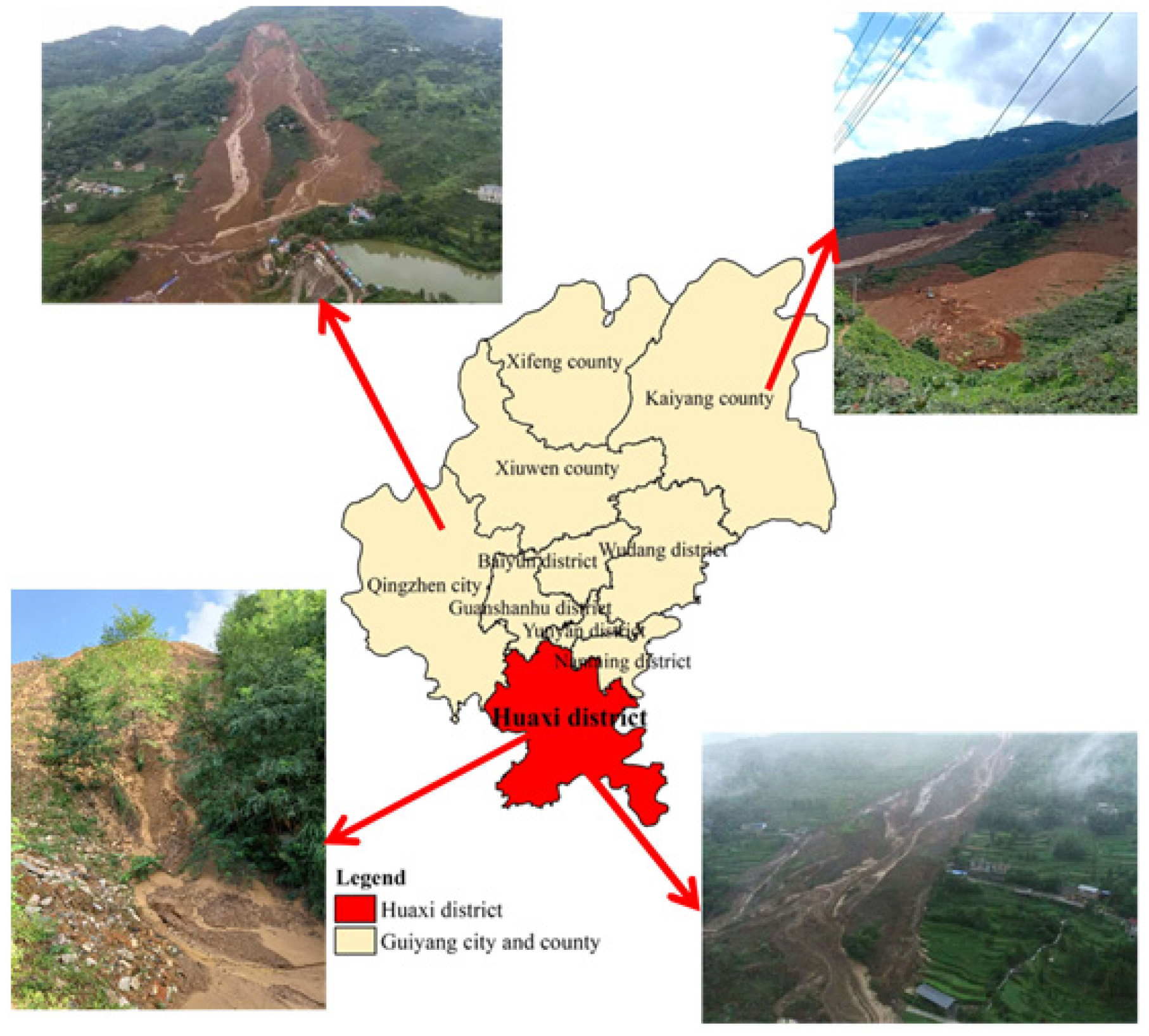

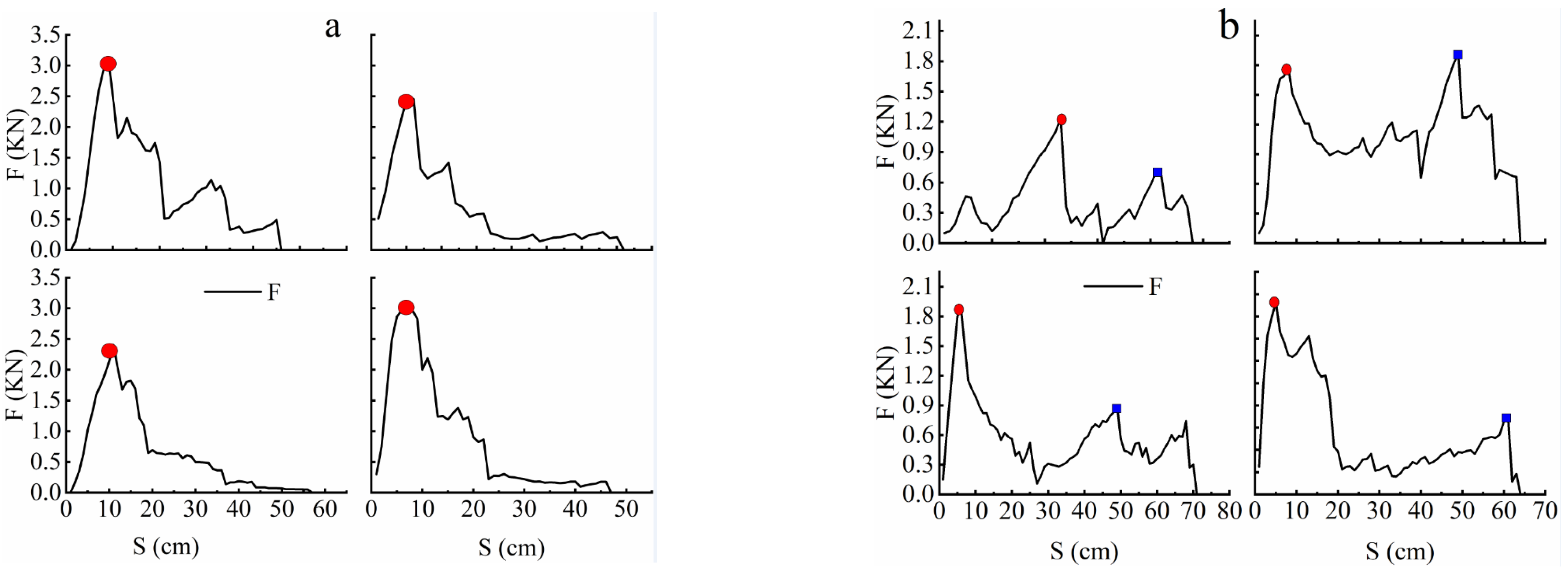

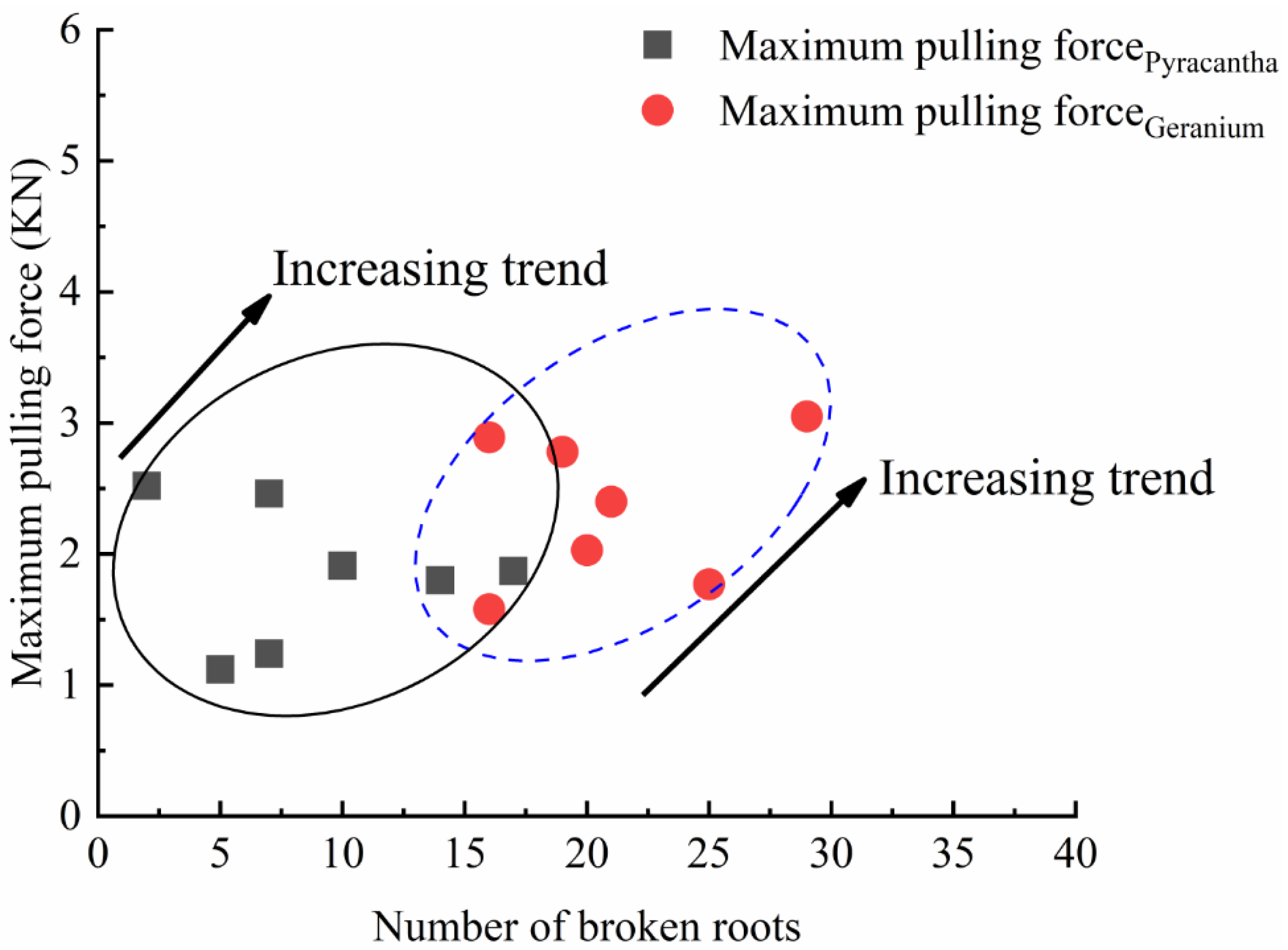
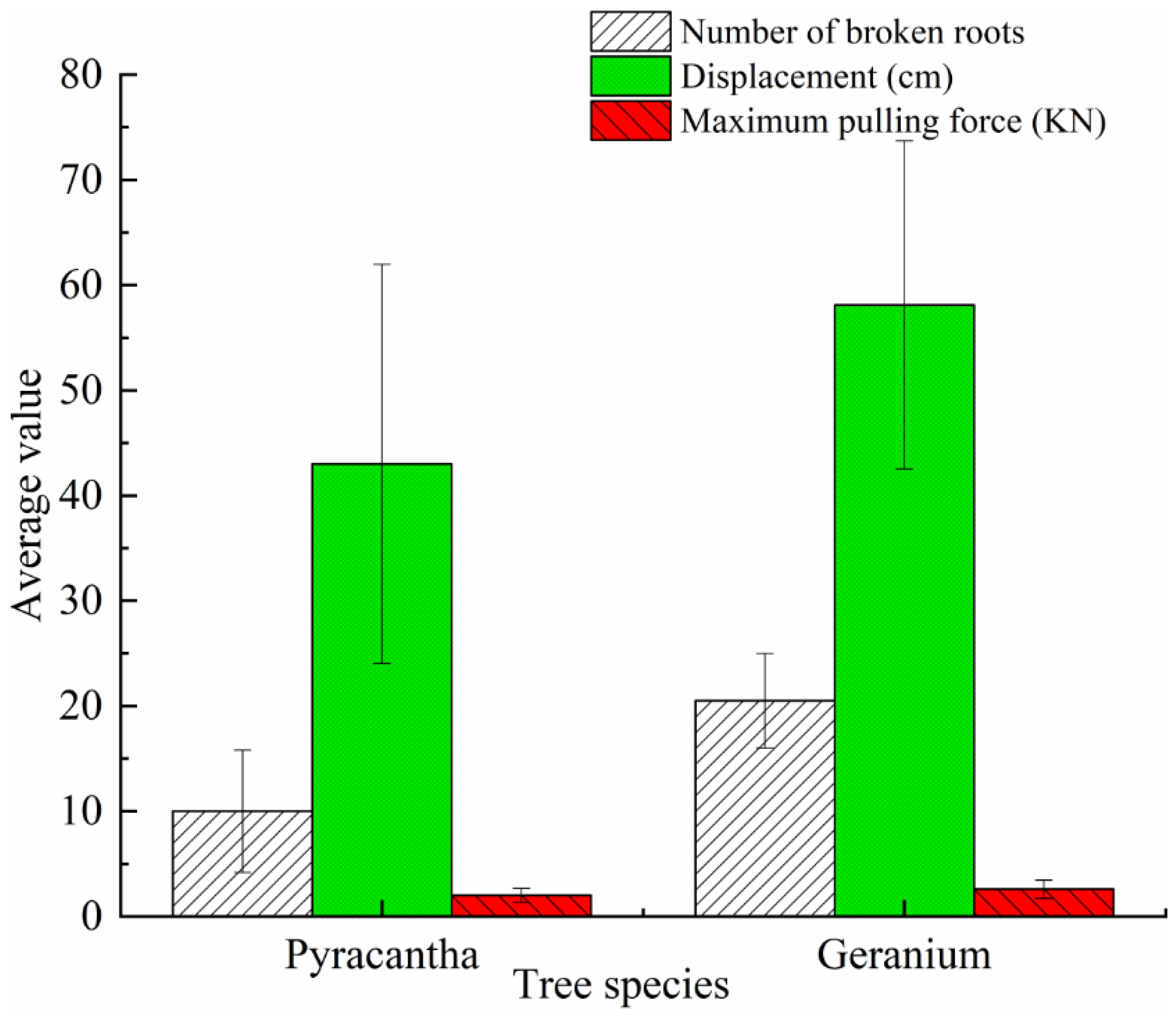

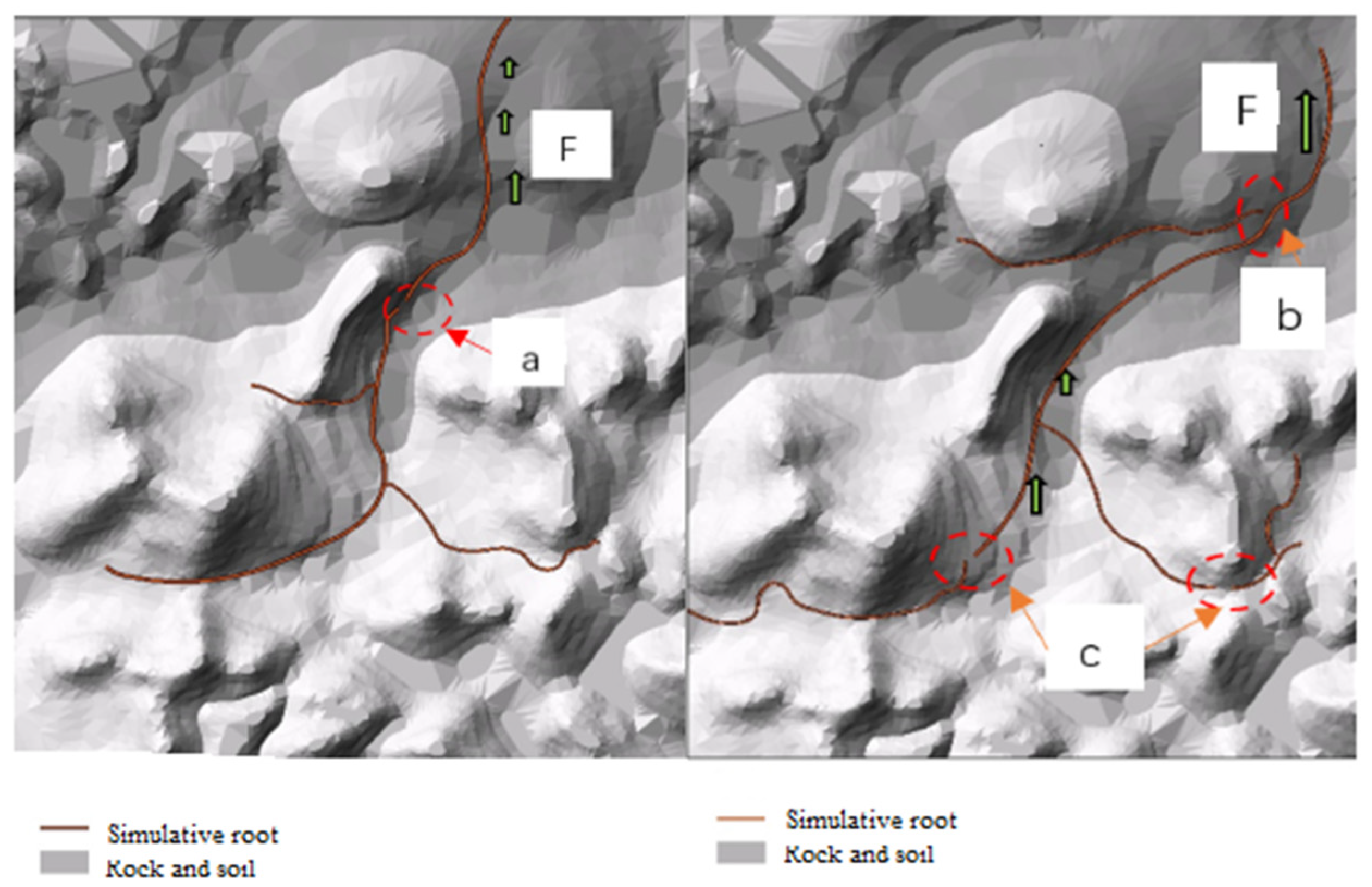
| Model | Model Name | Creator | Function | Advantage | Disadvantage |
|---|---|---|---|---|---|
| Wu | Wu | To calculate additional cohesion from the roots (Cr). | Simple to use | Overestimates the actual soil reinforcement by roots | |
| RBM | Schwarz | To estimate the maximum root resistance force | Root breakage is considered as progressive breaking and close to the true state of broken of roots | The model parameters still need to be tested in-situ or in the laboratory. | |
| WW | Wu and Waldron | To estimate the rise in the shear strength of soil due to roots | Simple and rapid | Study scale is limited |
| Species | Ground Diameter (mm) | Plant Height (cm) | Soil Moisture | Crown Area (m2) |
|---|---|---|---|---|
| Pyracantha | 22.2 | 130 | 26.7 | 0.36 |
| 25.00 | 65 | 24.6 | 0.80 | |
| 22.48 | 130 | 12.2 | 0.30 | |
| 23.12 | 190 | 26.3 | 0.72 | |
| 29.16 | 220 | 26.2 | 3.06 | |
| 25.04 | 130 | 26.2 | 0.66 | |
| 24.30 | 160 | 27.6 | 1.00 | |
| 17.60 | 130 | 25.3 | 1.10 | |
| Geranium | 25.10 | 167 | 28.3 | 0.42 |
| 24.52 | 210 | 29.6 | 0.49 | |
| 26.52 | 180 | 26.8 | 1.10 | |
| 18.22 | 168 | 15.3 | 0.72 | |
| 22.80 | 245 | 27.8 | 1.01 | |
| 17.88 | 200 | 41.3 | 0.56 | |
| 26.64 | 450 | 41.3 | 0.48 | |
| 19.20 | 210 | 42.3 | 0.90 |
Publisher’s Note: MDPI stays neutral with regard to jurisdictional claims in published maps and institutional affiliations. |
© 2022 by the authors. Licensee MDPI, Basel, Switzerland. This article is an open access article distributed under the terms and conditions of the Creative Commons Attribution (CC BY) license (https://creativecommons.org/licenses/by/4.0/).
Share and Cite
Ruan, S.; Tang, L.; Huang, T. The Pullout Mechanical Properties of Shrub Root Systems in a Typical Karst Area, Southwest China. Sustainability 2022, 14, 3297. https://doi.org/10.3390/su14063297
Ruan S, Tang L, Huang T. The Pullout Mechanical Properties of Shrub Root Systems in a Typical Karst Area, Southwest China. Sustainability. 2022; 14(6):3297. https://doi.org/10.3390/su14063297
Chicago/Turabian StyleRuan, Shihang, Lixia Tang, and Tongli Huang. 2022. "The Pullout Mechanical Properties of Shrub Root Systems in a Typical Karst Area, Southwest China" Sustainability 14, no. 6: 3297. https://doi.org/10.3390/su14063297





